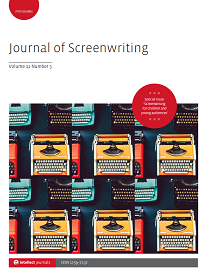
Full text loading...
 , Anna Zaluczkowska2
, Anna Zaluczkowska2
In 2018, a group of ten academics and industry professionals created ‘The Secret Story Network’. This practice-research initiative produced ten 60–90-minute role-playing games conducted on the social media platform WhatsApp. In the process, we worked to identify and refine design strategies that incentivize engagement with the type of narrative collaboration that media scholars commonly call ‘collective storytelling’. Via the participatory action research methodology, this study evolved through cycles of prototyping, testing, feedback, reflection and modification. This article analyses our study in relation to the ‘Threefold Word Model’ for RPGs proposed by Kim. Based on the affordances of the WhatsApp interface, we suggest a modification of this conceptual frame, in line with scholars such as Edwards, Bøckman and Bowman that extends investigations into four theoretical lenses that we use to examine the stories in our study. These modes are (1) drama, (2) game, (3) simulation and (4) immersion. The observations made also suggest new avenues for ‘writing’ and creating interactive digital narratives.

Article metrics loading...

Full text loading...
References


Data & Media loading...

Publication Date:
https://doi.org/10.1386/josc_00094_1 Published content will be available immediately after check-out or when it is released in case of a pre-order. Please make sure to be logged in to see all available purchase options.